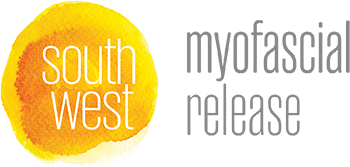When back discomfort becomes a daily struggle, even simple movements like getting out of bed or bending over can feel like monumental tasks. If you’ve tried stretches, rest, or even medication with little to no lasting results, it might be time to look deeper—beneath the surface of your muscles and into the fascia.
At Southwest Myofascial Release Clinic, we understand that back discomfort isn’t just about tight muscles or poor posture. Often, the source lies in the body’s connective tissue system known as fascia. This web-like structure wraps around your muscles and organs, giving your body its shape and support. When fascia becomes tight or restricted—whether from injury, poor movement patterns, or stress—it can contribute to persistent tension and discomfort, especially in the back.
What Is Myofascial Release?
Myofascial release (MFR) is a gentle, hands-on therapy designed to relieve restrictions in the fascia. Unlike deep-tissue massage or aggressive techniques, MFR focuses on sustained pressure and slow, deliberate movements. The goal is not just to relax the muscles but to soften and stretch the fascia, helping it return to a more mobile, healthy state.
The result? Less tension. More mobility. And often, a noticeable decrease in nagging discomfort that hasn’t responded to traditional methods.
Why Fascia Matters for Back Discomfort
Your fascia plays a central role in how your body moves and functions. In the case of back discomfort, tight or restricted fascia in the lower back, hips, or even the legs can create a pull on surrounding structures. This tension can compress joints, limit flexibility, and make everyday movements feel stiff or painful.
Myofascial release targets these tight areas, easing tension and allowing your body to move more freely. Many clients notice not only less discomfort but also better posture, improved circulation, and a sense of lightness they haven’t felt in years.
What Causes Fascial Restrictions in the Back?
Fascial restrictions can develop for many reasons, such as:
- Poor posture from sitting for long hours
- Repetitive movements or overuse injuries
- Past trauma or surgery
- Chronic stress or emotional tension
- Inactivity or lack of movement
These restrictions don’t just go away on their own. In fact, they tend to build up over time, silently limiting your body’s ability to function and adapt. That’s why addressing the fascia through myofascial release can be a game-changer for people with ongoing back discomfort.
How MFR Differs from Other Treatments
While massage, chiropractic care, and physical therapy each offer their own benefits, myofascial release works a little differently. Here’s how:
- Long-lasting relief: MFR treats the root of the problem (fascial restriction), not just the symptoms.
- Gentle and safe: No forceful manipulation or painful techniques are used. It’s safe for most individuals, including those with chronic pain or sensitivity.
- Whole-body focus: MFR recognizes that pain in one area (like the lower back) may stem from restrictions in another part of the body (like the hips or calves).
This comprehensive, hands-on approach makes MFR especially helpful for people who have tried “everything else” and are still searching for relief.
What to Expect During a Myofascial Release Session
At Southwest Myofascial Release Clinic, your comfort and goals come first. During your session, your therapist will perform a thorough assessment to identify areas of restriction and imbalance. Then, using gentle sustained pressure, they will work on these areas to release tension and encourage healthier movement.
Sessions are quiet, calming, and tailored to your needs. Many clients find them deeply relaxing—both physically and emotionally. You might leave feeling lighter, more flexible, and more in tune with your body.
The Benefits of Myofascial Release for Back Discomfort
Clients often report a variety of benefits after consistent myofascial release sessions, including:
- Reduced back pain and stiffness
- Better posture and spinal alignment
- Fewer headaches and less tension in the neck and shoulders
- Improved sleep and relaxation
- Increased range of motion and ease of movement
Because fascia connects the entire body, improvements in one area (like the lower back) can lead to overall gains in comfort and performance.
A Natural Alternative to Medication or Invasive Options
If you’ve been managing your back discomfort with pills, injections, or the “wait and see” approach, MFR offers a safe and natural alternative. It doesn’t mask symptoms—it helps resolve them at the source. And perhaps most importantly, it empowers you to reconnect with your body and build lasting resilience.
How to Get Started
If you’re in the New York City area and dealing with back discomfort that hasn’t resolved with traditional care, a Free Discovery Visit at Southwest Myofascial Release Clinic is a great place to begin.
This no-pressure session allows you to meet with a trained MFR therapist, talk through your symptoms, and explore whether myofascial release is right for you. You’ll walk away with greater clarity about your body and next steps for healing—all without cost or obligation.
A Holistic, Person-Centered Approach
At Southwest Myofascial Release Clinic, we don’t just treat pain—we get to know you. We believe that understanding your lifestyle, your movement patterns, and your goals is key to creating care that works. Whether you’re dealing with persistent back tension or just want to feel better in your daily life, we offer a space for healing that’s grounded in compassion and expertise.
Final Thoughts
Living with back discomfort can feel frustrating and isolating—but it doesn’t have to be your forever. Myofascial release is a gentle, proven method that can help unwind long-held tension, support better movement, and restore your quality of life.
You deserve to move with freedom and ease.
Book your Free Discovery Visit today and start your journey toward lasting relief.

